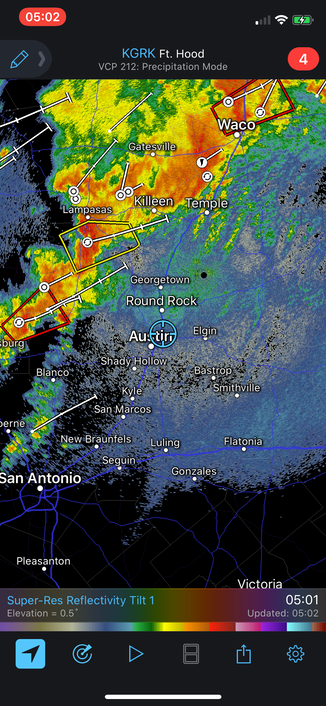- JMP User Community
- :
- Blogs
- :
- JMP Blog
- :
- DOE-ing Myself: Week 2 review
- Subscribe to RSS Feed
- Mark as New
- Mark as Read
- Bookmark
- Subscribe
- Printer Friendly Page
- Report Inappropriate Content
Weeks one and two of my efforts to unlock running efficiency through design of experiments (DOE) are in the books. An explanation of the experimental setup is here, and week 1 recap is here. One more week to go!
Recap of weeks 1 & 2
Stats
Number of runs: 10
Total distance: 70.8 miles (113.9 km)
Total time: 9 hrs 39 min
Number of catcalls while wearing short shorts: Still just 2, thankfully
During week two, I felt the elements exacting a toll on me. The warm humid Gulf air settled over the greater Austin area for much of the week. Mornings were steamy with near 100% humidity, while daytime temps varied widely. Normally, I would vary the timing of my run to take advantage of the better conditions (run in the morning on hot days, for example). This will likely add noise, specifically, wider variation in the outputs on the afternoon runs — but hey, that’s life.
Controlled variables
Last week, I described the two gear variables: shorts length and running shoes. Today, I’ll explain and describe the remaining experimental parameters.
The three consumption (food and drink) variables are:
- Coffee consumed immediately before my run (0 or 1 cup)
- Hydration during the run (water or sugary electrolyte)
- Meat consumption the day before the run
Coffee
I really like coffee. Every morning, I make coffee using Fara beans in a French press (does that sound pretentious or what?!), and my wife and I enjoy our coffee as our kids wake up with their energy meters turned to 11 and chaos ensues. I even enjoy coffee before a run if I’m hitting the road or trail mid-morning (or really, any time after 7 am). But normally, I run at 4 or 5 am and forgo coffee until I return.
Why am I testing this variable? As I’ve embraced this heart rate-controlled style of running outlined in the introduction to this series, I have become increasingly curious about what factors are affecting my heart rate. It seems logical that coffee would speed up my heart rate, but I want to know a) if this true for me personally and b) by how much.

Running hydration
Prior to embracing heart rate-controlled running, I would run what felt “good” or would target a certain pace. This required an electrolyte/carbohydrate solution (I love Tailwind, which provides salt and sugar) as I often ran into a zone where my body was fueled by sugar reserves. By capping my heart rate at 144 bpm (the theory states), my body will be fueled by fat reserves, negating the need for mid-run sugar consumption. Therefore, I should be able to fuel with only water. (Note: I will still need to replace the salts I lose; for this, I take salt capsules.) I aim to find out if I can run as far and as fast (or faster) without ingesting simple sugars.

Meat
This is the control I like the least. That's not because I don’t like being told if I can or cannot eat meat, but it takes planning and affects my whole family. I have been reducing my meat intake over the past few months, and while I don’t feel the need to go full vegetarian, I do want to know if giving up this protein source is a detriment or benefit to my running. At the end of the day, I want to eat what I want to eat, but I’d like to know its effect.
Those are my three consumption variables. The two behavioral variables that were controlled are run timing and aerobic warm-up.
Run Timing
I’m a morning person and, if all else is equal, I’d prefer to hit the road or trail at 4 or 5 am. This isn’t strictly out of a joy of waking up early, but I always aim to be home before my kids wake up on the weekdays — I don’t want my running to get in the way of fathering (vocation outweighs hobby). However, on the weekends and certainly during ultramarathon races, I will have to run later in the day or even into the night. Furthermore, as I run with a controlled heart rate, I want to know the effect that running into the afternoon and evenings will have. Let’s not fool ourselves: Texas summers are a little slice of hell. But that hell is fertile training ground for fall races, and I know I will have to begin training in the afternoon and evenings over the coming months.
Aerobic Warm-Up
Many are surprised to hear that I don’t stretch or warm up when I run. When I run, I walk out the door and go. When I get back, I sit down and relax. Unless there is a specific pain or tightness, I just assume my body will figure it out, and for the most part it has. This typically means the first half-mile or so is a bit slow as my body warms up and my heart rate gets going. I want to know: If I get my body primed ahead of time, will I be nearer to max efficiency from the first step? Five minutes on a rowing machine (rowing about 1000 m) seems like a good way to get my body going.

Uncontrolled Variables
There are several variables I cannot control but can track. They are:
- Temperature at start of run
- Humidity at start of run
- Heat index at start of run
- Time in bed the night before the run
- Time asleep the night before the run
- Cloud cover during daytime runs
- Fatigue (additive effect of many runs)
These are the variables I thought it was worth tracking. Can you think of any other uncontrolled variables you'd track?
Preliminary Results
Week two brought the first forced alteration of the DOE. On Easter morning (week 2, day 5) I woke up to this weather forecast:

I decided not to run with both severe and tornado warnings bearing down on me. My options were to a) switch from a morning to afternoon run or b) push the run to the next day, knowing I was going to cook a mean tri-tip for Easter dinner (it was supposed to be a meat-free run). I opted for option b. As it turned out, the weather front completely fizzled out, and I could have run without a problem. So it goes.
Once again, I’ll post data without interpretation, saving that for the next and final post in this series.
NOTE: All data is available on JMP Public.
When I run
Gear
Distance, warm-up and fatigue
Weather
Food and Fluid
Sleep and run timing
You must be a registered user to add a comment. If you've already registered, sign in. Otherwise, register and sign in.
- © 2024 JMP Statistical Discovery LLC. All Rights Reserved.
- Terms of Use
- Privacy Statement
- About JMP
- JMP Software
- JMP User Community
- Contact
